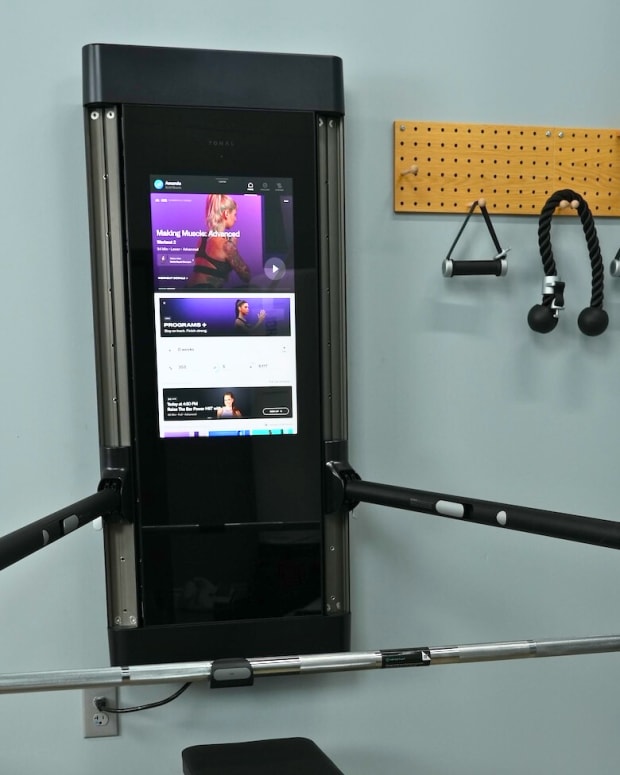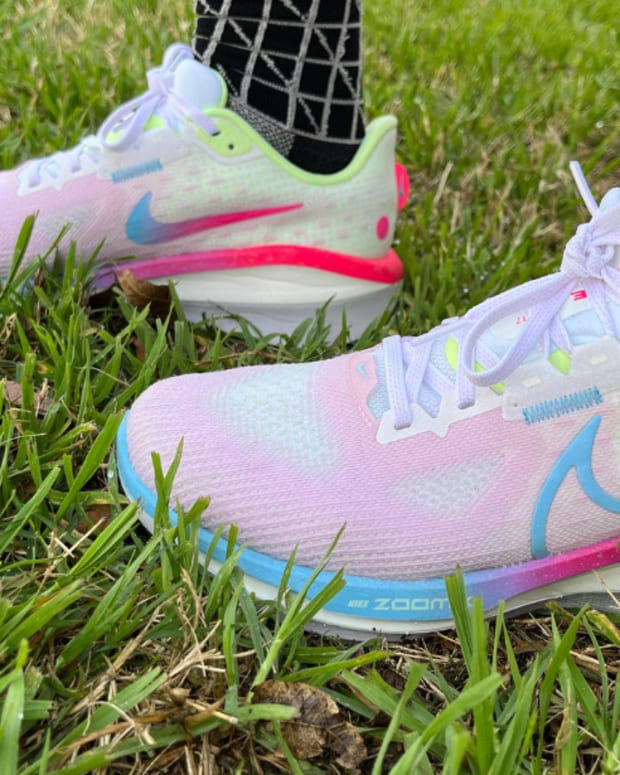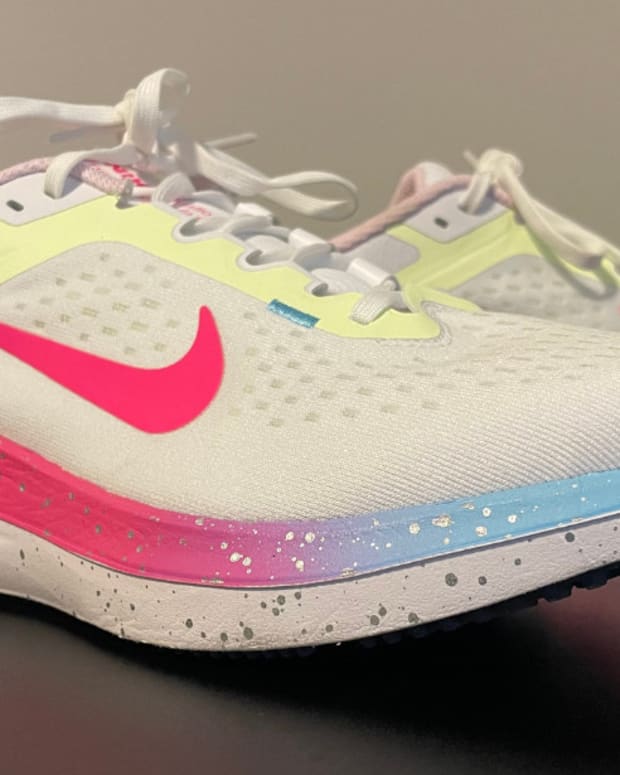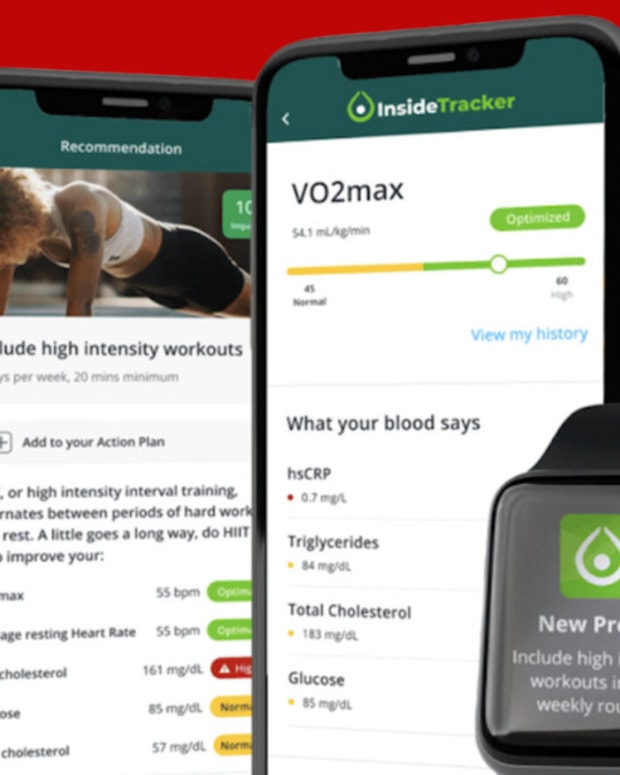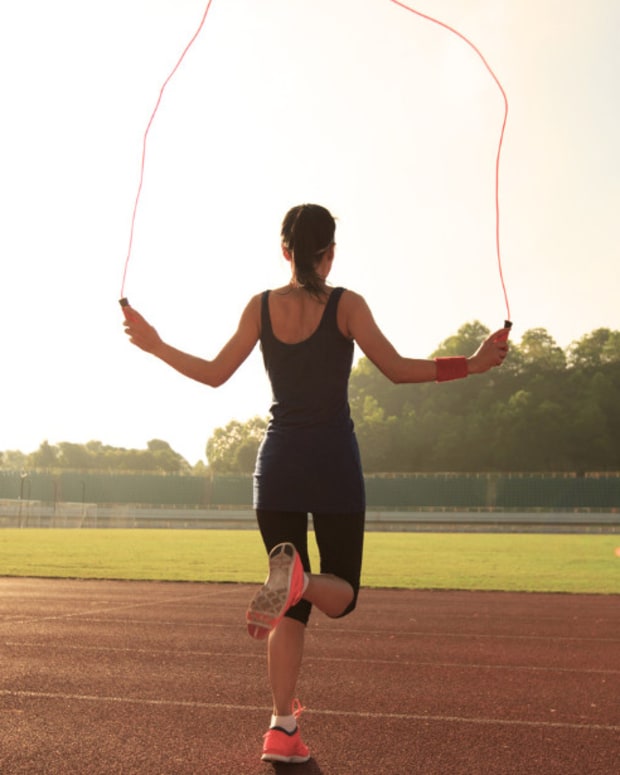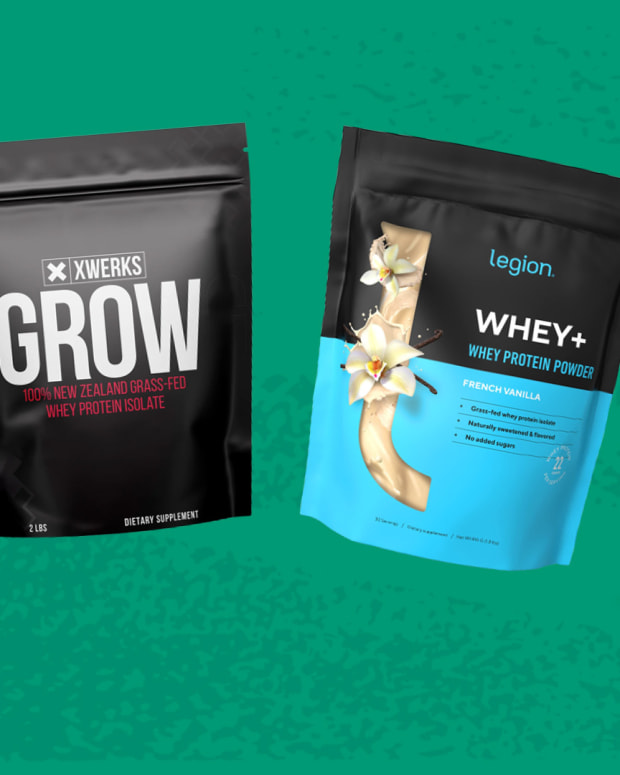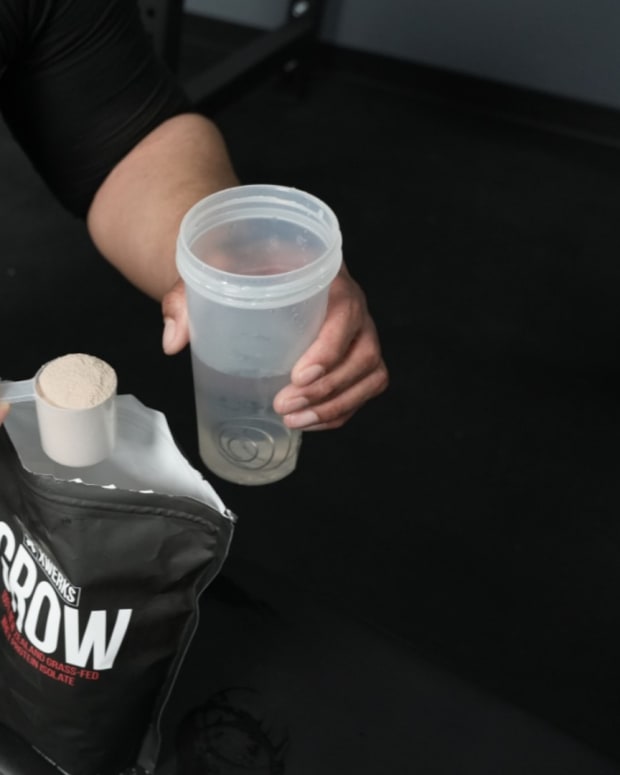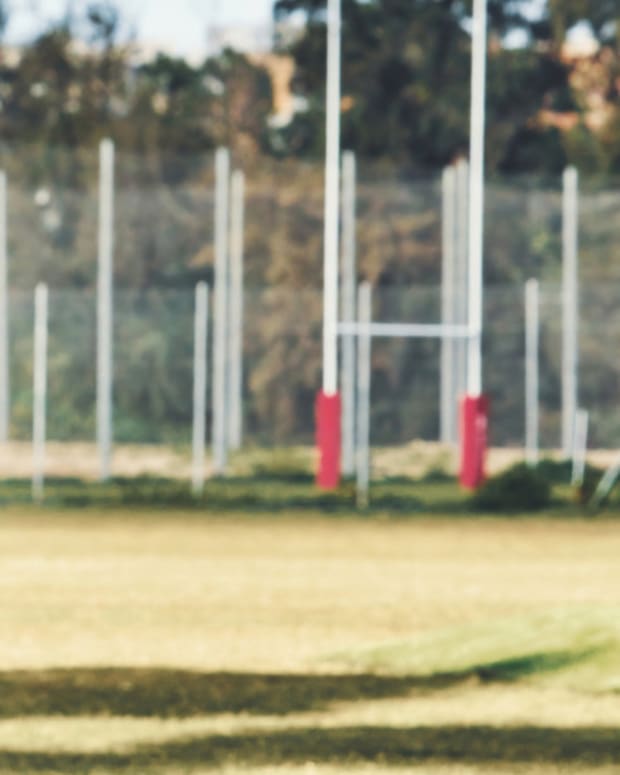The products featured in this article have been independently reviewed. When you buy something through the retail links on this page, we may earn commission at no cost to you, the reader. Sports Illustrated editorial staff are not involved in the creation of this content. Learn more here.
Your lower body does a lot of work to keep you upright and moving forward, and sometimes those hard-working muscles just need a little help. Your calf muscles, extending from below your knee to your ankle, allow you to walk, run, jump and flex your foot. Considering how repetitive those motions can be, it shouldn’t come as too much of a surprise that the calves are prone to soreness, fatigue and even overuse injuries.
Calf compression sleeves can help mitigate some of the stress you put on those muscles. These tight sleeves—essentially tall socks minus the footbed—squeeze your muscles in a way that increases blood flow, which can help reduce inflammation to make you feel closer to 100 percent. They’re not a magic solution, but they can also help reduce pain from injuries like muscle strains and shin splints. Some are even used for medical purposes, like edema, varicose veins and Deep Vein Thrombosis—a condition involving blood clots (but you should only use those special sleeves after talking to a doctor).
If you want to give your tired legs a boost, these are our picks for the best compression calf sleeves of 2024, along with a comprehensive guide to what features you should consider, which sleeves may be best for you and what science-backed benefits they provide.
Our Picks for the Best Calf Compression Sleeves of 2024:
- Best Overall: Zensah Compression Leg Sleeves
- Best Compression Calf Sleeves for Runners: CEP The Run Compression Calf Sleeves (Men's) and CEP The Run Compression Calf Sleeves (Women’s)
- Best Breathable Compression Calf Sleeves: Zensah Featherweight Compression Leg Sleeves
- Best Compression Calf Sleeves for Shin Splints: DonJoy Performance Anaform Shin Splint Sleeve
- Best Moisture-Wicking Compression Calf Sleeves: McDavid Compression Calf Sleeves
- Best Compression Calf Sleeves for Recovery: Shock Doctor Elite SVR Recovery Compression Calf Sleeves
- Best Compression Calf Sleeves for Pain Relief: Rymora Compression Sleeves
- Best Plus-Size Compression Calf Sleeves: Zeta XXL Wide Calf Sleeves
- Best Compression Calf Sleeves for Varicose Veins: Blitzu Calf Compression Sleeves
- Best Compression Calf Sleeves for Travel: Run Forever Sports Calf Compression Sleeves
Best Overall: Zensah Compression Leg Sleeves
Key Features:
- Quantity: Two sleeves
- Sizes: XS/S, S/M, L/XL
- Material: Nylon, spandex
- Compression (mmHg): 15-20 mmHg
Zensah designed the OG calf sleeves for sport, and they’re still a best-seller. Designed to imitate leg-taping methods used to support the calf and combat shin splints, each sleeve comes with muscle-mapped 3D chevron ribbing that provides targeted support to specific areas on the lower leg. Whether you’re wearing them to workout or just to travel, silver ions embedded in the moisture-wicking, breathable yarn keep the sleeves from getting stinky.
Pros:
- Thermoregulating fabric keeps skin cool in summer and warm in winter
- Fabric has UV protection
- Available in a variety of colors
- Unisex
Cons:
- May loosen over time
Purchase Zensah Compression Leg Sleeves
Best Compression Calf Sleeves for Runners: CEP The Run Compression Calf Sleeves
Key Features:
- Quantity: Two sleeves
- Sizes: II (S), III (M), IV (L), V (XL)
- Material: Polyamide, spandex
- Compression (mmHg): 16-18 mmHg on calf muscle, 22-24 mmHg on ankle
Running requires strong, sturdy calf muscles for forward propulsion, but also for shock absorption with each foot strike. CEP’s calf sleeves use graduated compression—meaning it’s tighter at the ankle and the pressure decreases upwards—to increase blood flow to an area that can get overworked due to all that repetitive motion. For runners who are wary of getting too hot wearing an extra layer, the open structure fabric design improves ventilation.
Pros:
- Treated with silver to reduce unpleasant odors and eliminate bacteria
- Smart Dry Extreme Air Technology adapts to weather conditions
- Gender-specific sizing
Cons:
- Ankle compression may feel too tight for some
- Limited color options
Purchase CEP The Run Compression Calf Sleeves (Men's) and CEP The Run Compression Calf Sleeves (Women’s)
Best Breathable Compression Calf Sleeves: Zensah Featherweight Compression Leg Sleeves
Key Features:
- Quantity: Two sleeves
- Sizes: S, M, L
- Material: Nylon, polypropylene, elastane
- Compression (mmHg): 20-30 mmHg
Zensah’s Featherweight Compression Leg Sleeves are just like the brand’s original best-sellers—except these are 35 percent lighter and more compressive. Even with less fabric to work with, the thin, lightweight material still features chevron ribbing and targeted compression. Moisture-wicking properties also make these compression sleeves thermal-regulating, meaning they will keep you cool in the summer and warm in the winter.
Pros:
- Lighter, more compressive fit
- Moisture-wicking and thermal-regulating
- Targeted compression provides extra support
Cons:
- May loosen over time
Purchase Zensah Featherweight Compression Leg Sleeves
Best Compression Calf Sleeves for Shin Splints: DonJoy Performance Anaform Shin Splint Sleeve
Key Features:
- Quantity: One sleeve
- Sizes: S, M, L, XL
- Material: Neoprene
- Compression (mmHg): Not listed
Shin splints are an overuse injury that causes inflammation of the muscles, tendons and tissue covering the shin bones. Increasing blood flow in that area can ease under-the-surface swelling, and the DonJoy Performance Anaform Shin Splint does that via vertical foam buttress pads that offer mild compression to the shin itself. Neoprene can be a tougher fabric to deal with (it’s the same thick material wetsuits are made of), but a stretch webbing ankle closure system allows for a comfortable fit.
Pros:
- Reinforced pull tabs for easy on/off
- Reflectivity for enhanced visibility in low light conditions
- Non-slip design
- Unisex
Cons:
- Have more bulk than other compression sleeves
- Neoprene is less breathable than other fabrics
- No mmHg listed
Purchase DonJoy Performance Anaform Shin Splint Sleeve
Best Moisture-Wicking Compression Calf Sleeves: McDavid Compression Calf Sleeves
Key Features:
- Quantity: Two sleeves
- Sizes: S, M, L
- Material: Nylon, spandex
- Compression (mmHg): Not listed
The minimalist McDavid Compression Calf Sleeves use hDc Moisture Management Technology, which means the fabric has been specially treated to keep your skin cool. When perspiration hits the sleeve, it disperses across the fabric, which speeds up the evaporation process and dumps heat away from the body faster than if you weren’t wearing it. But no matter how much you sweat, the fabric still offers solid compression designed to reduce fatigue and stabilize your leg muscles.
Pros:
- Six-thread flat-lock technology provides durability and strength at the seams
- Fabric is rated UV50+ for sun protection
- Protects skin from abrasions
- Unisex
Cons:
- No mmHg listed
- Limited color options
Purchase McDavid Compression Calf Sleeves
Best Compression Calf Sleeves for Recovery: Shock Doctor Elite SVR Recovery Compression Calf Sleeves
Key Features:
- Quantity: One sleeve
- Sizes: XS, S, M, L, XL
- Material: Tactel, polyamide, elastane
- Compression (mmHg): 18-21 mmHg at ankle, 12.6-14.7 mmHg at top
Compression sleeves that use graduated compression, like this one from Shock Doctor, are especially helpful for recovery because they push the old blood pooling at your calves—which may be full of metabolic waste from your workout—up to your heart, encouraging the circulation of fresh, oxygen- and nutrient-rich blood back to your lower body. That prevents the build-up of things like lactic acid, which can make you sore and derail the next day’s training.
Pros:
- AirFlow mesh and moisture-wicking fabric help regulate body/muscle temperature
- 3D knit design features four-way stretch and odor control properties
- Graduated compression
- Unisex
Cons:
- Calf sizing only goes up to 18 inches
- Only available in black
Purchase Shock Doctor Elite SVR Recovery Compression Calf Sleeves
Best Compression Calf Sleeves for Pain Relief: Rymora Compression Sleeves
Key Features:
- Quantity: Two sleeves
- Sizes: XS, S, M, L, XL, XXL
- Material: Nylon, polyester, and elastane
- Compression (mmHg): 20-30 mmHg
Improved circulation reduces swelling and pain, which means most calf compression sleeves should soothe sore legs. Rymora’s sleeves are considered medical-grade, so they’ll work better than those geared towards just exercise. The premium fabric uses 3D Knit Technology with four-way stretch capability, so they won’t roll or sag at any point, and they vent any sweat instantly so you don’t experience discomfort.
Pros:
- Ergonomic design supports calves
- Lightweight fabric is designed for breathability
- Budget-friendly
- Unisex
Cons:
- Compression may be too much for some
- Not as easy to get on or off as other sleeves
Purchase Rymora Compression Sleeves
Best Plus-Size Compression Calf Sleeves: Zeta XXL Wide Calf Sleeves
Key Features:
- Quantity: Two sleeves
- Sizes: S, L/XL, 2XL, 3XL, 4XL
- Material: Cotton, spandex, nylon
- Compression (mmHg): 20-30 mmHg
While most calf sleeves max out at around 18 inches, Zeeta’s XXL Wide Calf Sleeves can accommodate calves up to 24 inches around. The graduated compression may help with varicose veins, lymph-edema, diabetes, restless legs or travel by easing pain caused by inflammation and water retention. The smooth, multi-stretch fabric stays secure thanks to larger cuffs that shouldn’t dig into your legs, even with compression on the higher end of the spectrum.
Pros:
- Anti-odor and anti-static fabric wicks away moisture
- Accommodates calf sizes up to 26 inches around
- Available in a variety of colors
- Unisex
Cons:
- Thicker than standard compression sleeves
- Compression level may be too much for some
Purchase Zeta XXL Wide Calf Sleeves
Best Compression Calf Sleeves for Varicose Veins: Blitzu Calf Compression Sleeves
Key Features:
- Quantity: Two sleeves
- Sizes: S/M, L/XL, XXL
- Material: Nylon
- Compression (mmHg): 20-30 mmHg
Spidery, deep blue or purple varicose veins are the result of damaged valves in your veins that make it hard for the blood in your legs to move back up to your heart. This impaired mobility causes blood to pool in your calves or ankles. The Blitzu Calf Compression Sleeves help to keep your blood flowing smoothly, whether you’re working out or just standing on your feet all day. Plus, the embedded kinesiology strips can provide support, stability and pain relief for key ligaments, tendons and muscles in the lower leg.
Pros:
- Very budget-friendly (only $12.97 on Amazon)
- Graduated compression enhances blood flow
- Uses kinesiology techniques for pain relief and recovery
- Unisex
Cons:
- Heavier than other compression sleeve options
- Less durable than other compression sleeves (based on material quality and customer reviews)
Purchase Blitzu Calf Compression Sleeves
Best Compression Calf Sleeves for Travel: Run Forever Sports Calf Compression Sleeves
Key Features:
- Quantity: Two sleeves
- Sizes: S, M, L, XL, XXL, XXXL
- Material: Nylon, spandex
- Compression (mmHg): 15-20 mmHg
Sitting in one place for hours—like when you’re on a plane—isn’t exactly conducive to healthy blood circulation. Fluid pooling at your feet can, in a worst case scenario, lead to blood clots. The middle-of-the-road, graduated compression used by Run Forever makes these compression sleeves a win-win: They’re strong enough to boost blood flow when you’re sedentary, and supportive enough to provide muscle protection and assistance during activity.
Pros:
- Made from four-way stretch moisture-wicking fabric
- Premium fabric is machine-washable and breathable
- Available in a variety of colors
- Unisex
Cons:
- Some reviewers reported issues with sizing
- Minimal extra features (ex: no strategic ribbing)
Purchase Run Forever Sports Calf Compression Sleeves
How to Choose the Best Compression Calf Sleeves for You
Millimeters of mercury (mmHg)
Millimeters of mercury is a unit for measuring pressure. The most common over-the-counter compression sleeve levels range between 10-30 mmHg. If you’re new to compression sleeves, start at the lower end of the spectrum. Over 20 mmHg is considered medical grade, and you shouldn’t use calf sleeves that exceed 30 mmHg without talking to a doctor.
Calf circumference
To find the right fit for compression calf sleeves, wrap a fabric tape measurer around the widest part of your calf. The number of inches (or centimeters) will correspond to the sleeve size. Make sure to check a company’s size chart before committing because brands differ in sizing, and a too-snug fit will be uncomfortable.
Location of wear
Compression calf sleeves should be worn, predictably, on your calf. Pull the sleeve on like you would a pair of socks; it should cover from just below your knee to just above your ankle.
Duration of wear
There's no exact rule about how long you should wear calf sleeves, but they're meant to be worn during exercise, after exercise for recovery and during travel. You don't need to wear them 24 hours a day (unless directed by your doctor).
Length of sleeve
Calf compression sleeves differ from compression socks because there’s no foot bed. Most are approximately 12-inches long, but some can be as long as 17 inches. Make sure to check a company’s size chart, where they may include height or calf length as sizing references. The sleeve should fully cover the calf muscles in the back of your lower leg.
Material
Leg compression sleeves are generally made from a blend of nylon and spandex, although some may be made from cotton, neoprene or specialty yarns with anti-odor and antibacterial properties. Look to see what kind of stretch and moisture-wicking capabilities a sleeve has. You want them to feel snug, but not too difficult to get on and off, and as breathable as possible.
What We Looked for When Choosing the Best Compression Calf Sleeves
In compiling a list of the best compression calf sleeves, we looked at the level of pressure offered, the materials used, the design, available sizing and additional features (ex: breathability, stretch capabilities, moisture-wicking, etc.).
Benefits of Calf Compression Sleeves
Better blood circulation
Better blood circulation is the number one benefit of sleeves. Wearing calf compression sleeves significantly increased tissue oxygen saturation—a sign of healthy blood flow—in a 2015 study published in the Journal of Sports Medicine. And external compression increased blood flow more than twofold in an older study published in The Journal of Applied Physiology. If blood circulation is a concern for you, calf and foot massagers are another effective tool for improving blood flow.
Reduced swelling and pain
Increased blood flow can also lead to reduced swelling and pain. Compression clothing—including calf sleeves—was shown to reduce muscle pain, damage and inflammation in runners in a 2016 study published in Sports Medicine. Research from The International Journal of Sports Physiology and Performance also determined that compression clothing led to small to moderate reductions in muscle swelling and perceived muscle pain. An older study in The Journal of Strength and Conditioning Research determined that the use of compression appears to help in the recovery process after an intense heavy resistance training workout.
Related: The Most Comfortable Running Shoes to Keep You Supported While Exercising
Better post-workout muscle recovery
Sleeves are most commonly worn during and after exercise. According to a 2014 study published in Medicine & Science in Sports & Exercise, wearing a compression garment after resistance exercise helped significantly improve muscle recovery. Results from a 2010 study published in the European Journal of Applied Physiology indicated “that compression clothing is an effective recovery strategy following exercise-induced muscle damage.” Recovery and wellness items like massage guns, foam rollers, cold plunge tubs or ice baths, and leg compression machines have been known to help alleviate sore muscles after intense workouts.
Potentially enhanced endurance performance
No sleeve can replace proper training, but a 2016 Sports Medicine study on runners found that wearing compression clothing may improve certain endurance performance variables (ex: time to exhaustion) due to improvements in running economy, biomechanics (or movement patterns) and muscle temperature. Also, a 2017 study in Frontiers in Physiology determined that running biomechanics and lower limb muscle function were more dynamic—AKA more efficient—in calf compression sleeves.
Who Should Buy Compression Calf Sleeves
Anyone who exercises can use compression calf sleeves, especially if you’re doing high-intensity workouts or notice lingering calf pain during and after your workouts. If you have a medical condition that may benefit from compression sleeves, make sure to talk to your doctor first to figure out which type may be right for you.
When You Should Wear Compression Calf Sleeves
Compression calf sleeves are most commonly worn during activity—whether that’s a workout or just an extended period of time on your feet. They can also be worn post-activity to support recovery, as well as during travel.
Compression Calf Sleeves FAQs
Should I wear compression sleeves when walking?
You can. Compression sleeves promote circulation, so wearing them while walking will increase blood flow to your calves, which can help alleviate pain and soreness. They also reduce vibration—which occurs every time your foot hits the ground—to improve muscle efficiency.
How tight should a compression calf sleeve be?
Compression calf sleeves should fit snug to the skin—if they're loose, they won't provide compression, and therefore won't be effective. They may feel tight when you first put them on, but they shouldn't be so tight that they restrict your movement. Follow the size guide on a company's website to determine the right fit for you.
Can compression sleeves cause blood clots?
Compression sleeves are designed to support healthy circulation, so they actually lower your risk of blood clots. Generally, complications from compression sleeves occur only when someone shouldn't be wearing them at all or they’re wearing them incorrectly.
Is it okay to wear a compression sleeve all day?
There's no exact rule about how long you should wear calf sleeves, but they're meant to be worn during exercise, after exercise for recovery and during travel. You don't need to wear them 24 hours a day.
How many hours a day should you wear a compression sleeve?
General guidelines suggest wearing a compression sleeve for as long as you're working out or no more than 12 hours a day if you're engaged in activity. If you're wearing them while sedentary, you should avoid using them for more than two hours.
Final Thoughts
Compression calf sleeves can be a smart investment for anyone looking to mitigate leg fatigue and pain. You can reap the benefits during a workout, while standing on your feet for hours or while sitting in one place. No matter the scenario, the pressure these sleeves apply to your muscles can help promote healthy blood flow and ease inflammation. Fit is the number one decider of effectiveness, so make sure to properly measure your calf and buy accordingly.
Prices are accurate and items in stock as of publish time.











